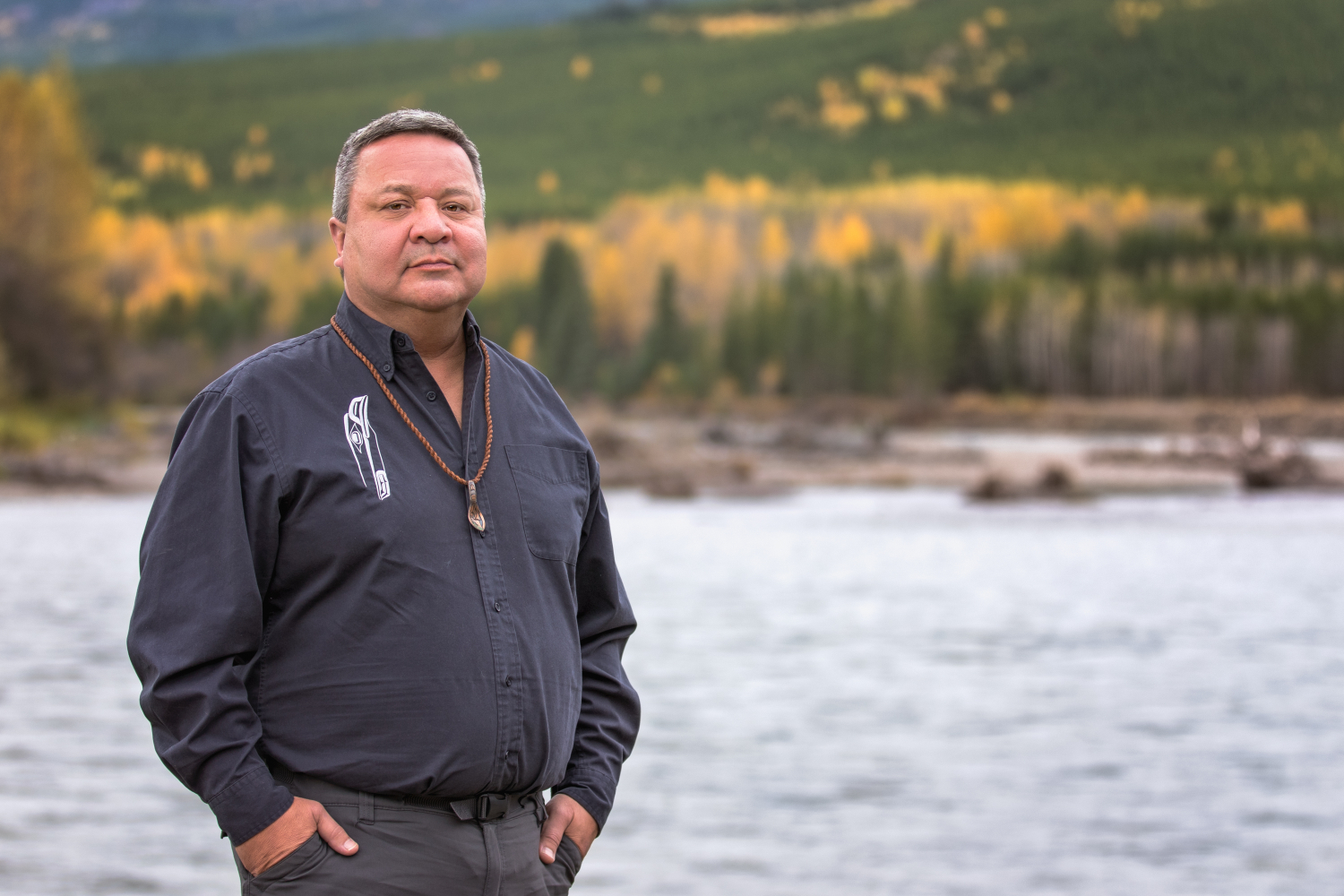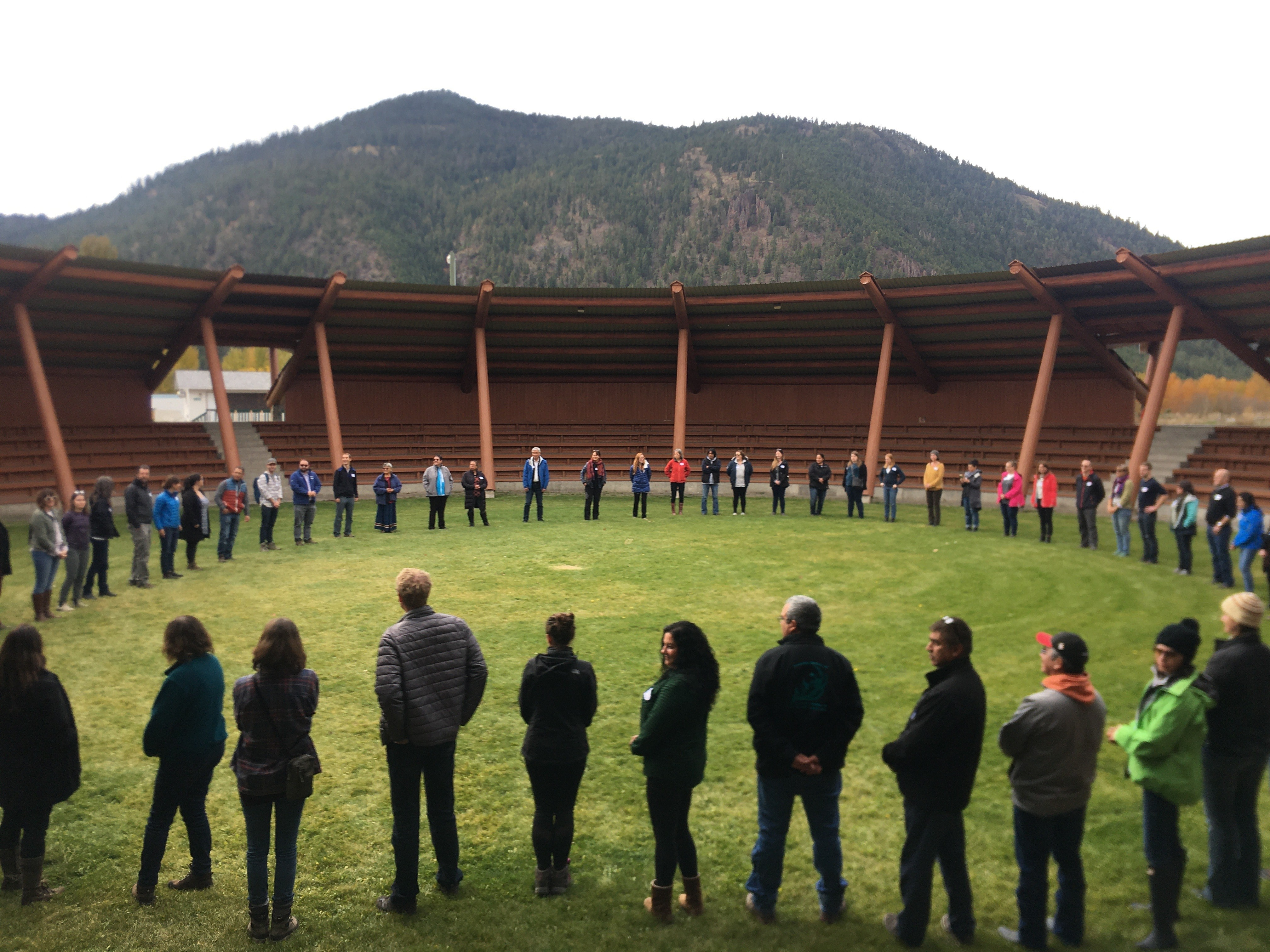
The Indigenous Right to Protect Water
To address climate change, we must recognize the rights of Indigenous peoples to manage the land and water.
Story by Roohi Sahajpal
Photo by Carla Lewis
This was the cover story of the 2021 Vancouver Foundation Magazine. Read the PDF issue here.
After experiencing a historic “heat dome” during the summer of 2021 in BC, it’s nearly impossible to ignore the impact of climate change. While governments and industries continue to work on these issues, Indigenous communities have been taking the lead by using their knowledge of the land to create change. “A lot of my Elders call the waters and the land ‘our garden’ or ‘our food basket.’ In many stories that I’ve heard, when people disrespected the land or the water or the animals, there was always a negative consequence,” says Hup-Wil-Lax-A (Kirby Muldoe).
Muldoe, who is of Tsimsian and Gitxsan descent, is the Indigenous Engagement Specialist for SkeenaWild Conservation Trust based in Terrace, BC.
Storytelling Inspires Salmon and Water Protectors
Muldoe states that while government and industry often hold open houses in Indigenous communities to talk about the benefits of resource extraction on the local economy and the resulting job(s) creation, they seldom discuss the risks. This is where SkeenaWild has such an important role to play in educating people about the risks to wild salmon, and nature in general, through storytelling.
When the Salmon Spoke is a documentary by SkeenaWild featuring storytellers from coastal Tlingit, Haida, and inland Tahltan communities of Alaska and BC.
“In our role as salmon speakers, our goal is to speak for the salmon and to protect the salmon…because if you protect the salmon, you protect the water, and food and water security for future generations,” Muldoe explains. Muldoe is not against resource extraction, but Indigenous sovereignty needs to be at the helm of such activities. “We have the right to decide what happens within our territories,” he says. “I think giving back the [Indigenous] sovereignty would allow us to become one with the land again because many of us have lost that connection.”
“Through storytelling and the work that I’ve done, I’ve seen a lot more awareness from many walks of life, young and old, Indigenous and non-Indigenous. Hundreds of people are now standing in front of industrial actors like logging, mining, or oil and gas, to protect their right to food and water security.”
But implementing solutions is difficult, Muldoe adds.
“The system is hard to change. First of all, because there is no willingness to change from industry and government and because people are very busy, it’s hard to get their attention.” Muldoe says that success to him looks like bringing people together, building and maintaining those relationships, and providing space for people to exchange information, whether it’s cultural or social.
More Recognition of First Nations Rights Needed
SkeenaWild isn’t the only organization leading the way for Indigenous sovereignty when it comes to climate change.
The First Nations Fisheries Council (FNFC) works with, and supports, BC’s 204 First Nations in order to protect, reconcile, and advance First Nations title and rights as they relate to fisheries and the health and protection of aquatic resources, including access for food, cultural, and economic purposes. With 204 nations across BC, all from different major watersheds, the FNFC convenes to support these nations to identify their concerns and share strategies and solutions for change as they lead the charge to find solutions in their respective areas.
Photo credit First Nations Fisheries Council.jpg

Photo courtesy of First Nations Fisheries Council.
“The biggest topic of all our conversations is really recognition of authority and jurisdiction…and concern for First Nations who have had laws and authorities related to natural resources in their territories for thousands of years that they follow,” says Susi Porter-Bopp, Project Manager for FNFC’s Water for Fish initiative.
The FNFC sees the positive impact of Indigenous sovereignty in addressing climate change in the work they do every day. This spans from articulating Indigenous water laws, developing water quality standards for territories, to land use planning based on what communities want within their laws.

